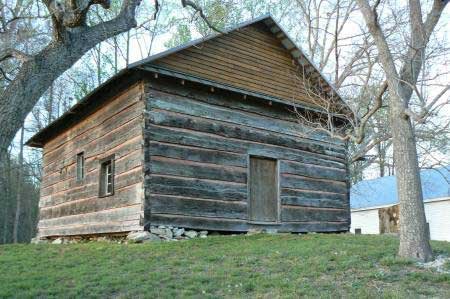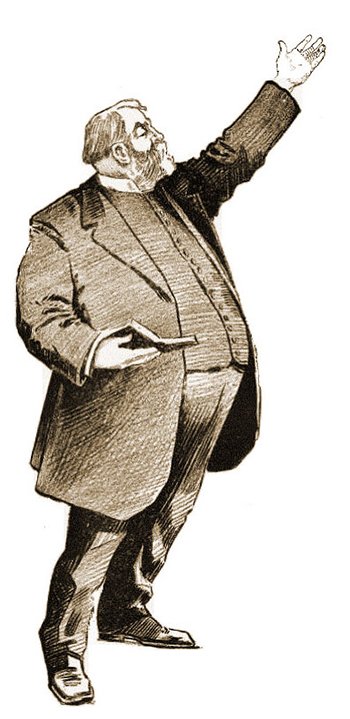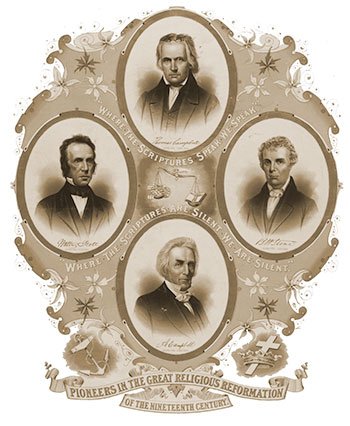1755 The Separate Baptist Revival and the Expansion of Baptists in the South

Sandy Creek Church founded by Shubal Stearns in 1755
The Separate Baptist revival of 1755, sparked by Shubal Stearns and his followers, significantly shaped the religious landscape of the American South1. This comprehensive history delves into the revival’s antecedents, key figures, supernatural events, and lasting impact. It also includes a timeline of important dates, events, and people associated with this pivotal movement.
Antecedents of the Revival
The Separate Baptist revival emerged from the fervour of the First Great Awakening, a period of heightened religious enthusiasm that swept through the American colonies in the 1730s and 1740s1. This era witnessed a surge in powerful preaching, a renewed emphasis on personal conversion experiences, and an increased focus on the role of the Holy Spirit in the lives of believers1.
The Great Awakening challenged traditional religious practices and led to divisions within existing denominations, as people sought more direct and emotionally engaging forms of worship2.
The Great Awakening also had a significant social and humanitarian impact. It sparked missionary activity among Native Americans, fuelled the first significant movement against slavery, and inspired various humanitarian undertakings3. The revival further led to the founding of several educational institutions, including Princeton, Brown, Rutgers, and Dartmouth3.
One of the most influential figures of the Great Awakening was George Whitefield, an Anglican mimister known for his charismatic preaching and ability to draw massive crowds to his open-air meetings2. Whitefield’s message resonated with many colonists, leading to the formation of “New Light” churches that embraced the revival’s emphasis on emotionalism, personal experience, and the importance of prayer and testimonies in fostering spiritual growth1.
These New Light churches often separated from established denominations, leading to the rise of Separate Baptists in New England2. Separate Baptists distinguished themselves from Regular Baptists through their emphasis on emotional religious experiences, allowance of women preachers, and opposition to a paid clergy5.
The emphasis on personal religious experience during the Great Awakening created a fertile ground for the Separate Baptist movement to take root and flourish. Shubal Stearns, a Congregationalist minister from Connecticut, became a key figure in this burgeoning movement.
Shubal Stearns and the Sandy Creek Revival
Shubal Stearns, after hearing George Whitefield preach, underwent a profound conversion experience that led him to embrace the revival’s emphasis on personal conversion and the direct leadership of the Holy Spirit1. Stearns’s church became embroiled in a controversy over infant baptism, leading him to reject the practice and seek baptism by immersion1. He was ordained as a Separate Baptist minister in 17517.
In 1754, Stearns and a small group of followers, consisting of eight men and their wives, mostly relatives, moved south to Virginia, seeking “providential openings” for ministry7. They eventually settled in Sandy Creek, North Carolina, in 1755, where they established the Sandy Creek Baptist Church9.
Stearns and his followers were dubbed “The Old Brethren” by Old School Baptists churches in Appalachia10. Stearns possessed a unique “musical ‘barking’ preaching” style that captivated audiences10. He was known for his sensitivity to “Divine guidance” and believed in receiving personal instruction from heaven8.
The Separate Baptists at Sandy Creek represented a new kind of Baptist, distinct from those in the Old South who had little impact on their communities1. Stearns’s emphasis on internal conversion, the “new birth” experience, challenged the prevailing external and ritualistic approach to religion common in North Carolina at the time6. This focus on a heartfelt and personal faith resonated with people on the Southern frontier who were seeking a more engaging form of religion6.
Stearns’s passionate preaching ignited a revival at Sandy Creek1. The church grew rapidly, with hundreds of people converting and being baptized1. In just two years, the congregation expanded from 16 to over 600 members11. Stearns’s “holy whine” preaching style, characterized by a nasal tone and sing-song cadence, captivated audiences and contributed to the revival’s spread12.
The rapid growth of the Sandy Creek church and the expansion of the Separate Baptist movement were not without challenges. Stearns’s paternalistic leadership style and the influx of new members created tensions within the Sandy Creek Association12.
Furthermore, the association faced difficulties due to its relationship with the Regulator Movement, a social and political upheaval in North Carolina during the 1760s12. Stearns initially threatened participants in the Regulator Movement with excommunication but later changed his position when he faced threats from the Regulators12.
Key Leaders of the Revival
Besides Shubal Stearns, several other figures played crucial roles in the Separate Baptist revival:
- Daniel Marshall: Stearns’s brother-in-law, Marshall joined him in Virginia and helped establish the Sandy Creek Church7. He became a prominent leader in the Separate Baptist movement and accompanied Stearns on his preaching tours throughout the Piedmont region12.
- Wait Palmer: A Separate Baptist pastor in Connecticut who baptized Stearns and influenced his views on believer’s baptism1.
- Joseph Breed: A minister who worked alongside Stearns and Marshall in spreading the revival’s message12.
These leaders, along with numerous other preachers and exhorters, travelled throughout the South, establishing churches and spreading the Separate Baptist message12.
Separate Baptist Beliefs and Practices
The Separate Baptists held a strong emphasis on following the Bible as their sole guide in matters of faith and practice13. They adhered to several ordinances, including baptism, the Lord’s Supper, anointing with oil, the right hand of fellowship, and feet washing13. These practices reflected their commitment to following the teachings of the New Testament and maintaining a close connection to the early church.
The Separate Baptists were Arminian in their theology, believing that individuals have free will and can choose to accept or reject God’s offer of salvation13. They also believed in the possibility of “backsliding,” where a believer could turn away from God and fall back into a life of sin13. However, they maintained that backsliders could be restored to fellowship with God through repentance and seeking forgiveness13.
Lasting Impact of the Revival
The Separate Baptist revival had a profound and lasting impact on the religious landscape of the American South. It led to the rapid growth of Baptist churches and the establishment of new denominations1. The revival also contributed to the rise of evangelicalism in the South, with its emphasis on personal conversion, emotional preaching, and active evangelism1. This evangelical fervour shaped Southern religious culture for generations to come.
Furthermore, the Separate Baptist revival played a role in promoting religious freedom in the colonies17. Baptists, including the Separates, actively advocated for the separation of church and state, paving the way for greater religious tolerance in America17. This advocacy found expression in the Baptist General Committee meetings of 1785, where Baptists discussed grievances related to religious liberty and sought to ensure their right to worship freely18.
The Separate Baptist revival also had a lasting impact on Baptist identity and organization. It led to the formation of the South Kentucky Association of Separate Baptists in 1786, which played a significant role in shaping the development of Baptist churches in the region13. The revival’s influence can also be seen in later religious movements, such as the Cane Ridge Revival in Kentucky in 180114.
The Separate Baptists’ commitment to missions and evangelism extended beyond the American South. They established churches in India and supported missionary work in the Ivory Coast13. This international outreach demonstrated their dedication to spreading the gospel and sharing their faith with people around the world.
Timeline of Important Dates, Events, and People
| Date | Event | People | Location |
| 1730s-1770s | First Great Awakening sweeps through American colonies | George Whitefield, Jonathan Edwards, Gilbert Tennent | American colonies |
| 1745 | Shubal Stearns hears George Whitefield preach and experiences conversion | Shubal Stearns, George Whitefield | Connecticut |
| 1751 | Stearns rejects infant baptism and is ordained as a Separate Baptist minister | Shubal Stearns, Wait Palmer | Connecticut |
| 1754 | Stearns and followers move south to Virginia | Shubal Stearns, Daniel Marshall | Virginia |
| November 22, 1755 | Sandy Creek Baptist Church established in North Carolina | Shubal Stearns, Daniel Marshall | Sandy Creek, North Carolina |
| 1758 | Sandy Creek Association of Separate Baptists formed | Shubal Stearns, Daniel Marshall, Joseph Breed | Sandy Creek, North Carolina |
| 1765-1771 | Separate Baptist movement expands throughout the South | Shubal Stearns, Daniel Marshall | Southern colonies |
| May 19, 1780 | “Dark Day” occurs in northeastern United States | Northeastern United States | |
| November 20, 1771 | Shubal Stearns dies | Randolph County, North Carolina | |
| 1786 | South Kentucky Association of Separate Baptists formed | Kentucky | |
| 1801 | Cane Ridge Revival | Kentucky |
Conclusion
The Separate Baptist revival of 1755, led by Shubal Stearns and his band of followers, stands as a key moment in American Christian history. Emerging from the fervour of the First Great Awakening, the revival’s emphasis on personal conversion, emotional responsiveness, and the guidance of the Holy Spirit resonated with colonists seeking a more heartfelt and engaging faith. This, combined with Stearns’s charismatic preaching style and the dedicated leadership of figures like Daniel Marshall, fuelled the movement’s rapid expansion throughout the South.
The revival’s impact extended beyond the growth of Baptist churches. It contributed to the rise of evangelicalism in the South, shaping religious culture for generations to come. Furthermore, the Separate Baptists actively advocated for religious freedom, contributing to the growing movement for the separation of church and state in the colonies.
Their legacy can be seen in the formation of new Baptist associations, the inspiration of later revivals like Cane Ridge, and their commitment to missionary work both within America and abroad. The Separate Baptist revival of 1755 remains a testament to the transformative power of religious enthusiasm and its enduring influence on American religious history.
Works cited
- Birthed in Revival: Shubal Stearns and the Remarkable Expansion of Baptists in the South, accessed on January 29, 2025, https://equippingsaints.com/2019/04/17/birthed-in-revival-shubal-stearns-and-the-remarkable-expansion-of-baptists-in-the-south/
- Parson’s Cause | Religious Freedom, Colonial Virginia & James Madison | Britannica, accessed on January 29, 2025, https://www.britannica.com/event/Parsons-Cause
- Society of Colonial Wars in the State of Connecticut – 1740s Jonathan Edwards and the Great Awakening, accessed on January 29, 2025, https://www.colonialwarsct.org/1740_s.htm
- Post-Reformation, Revival, the Great Awakening – Relevant Christianity, accessed on January 29, 2025, https://relevant-christianity.com/history-of-theology/hcmt13%20-%20revival.html
- Which Baptist are you again? | Christian History Magazine, accessed on January 29, 2025, https://christianhistoryinstitute.org/magazine/article/which-baptist-are-you-again
- Shubal Stearns – Wikipedia, accessed on January 29, 2025, https://en.wikipedia.org/wiki/Shubal_Stearns
- Separate Baptists – Wikipedia, accessed on January 29, 2025, https://en.wikipedia.org/wiki/Separate_Baptists
- Shubal Stearns Separate Baptists and Sandy Creek – Pastor Tim, accessed on January 29, 2025, https://pastortim.com/shubal-stearns/
- en.wikipedia.org, accessed on January 29, 2025, https://en.wikipedia.org/wiki/Shubal_Stearns#:~:text=Shubal%20Stearns%20(sometimes%20spelled%20Shubael,%2C%20Guilford%20County%2C%20North%20Carolina.
- The Roots of Appalachian Christianity: The Life and Legacy of Elder Shubal Stearns (Religion In The South) – Amazon.com, accessed on January 29, 2025, https://www.amazon.com/Roots-Appalachian-Christianity-Stearns-Religion/dp/0813191289
- Baptist Heroes of the Faith (Vol. 3) Shubal Stearns – Book Heaven – Challenge Press, accessed on January 29, 2025, https://www.baptist-books.com/products/baptist-heroes-shubal-stearns
- Shubal Stearns (1706 – 1771) – North Carolina History, accessed on January 29, 2025, https://northcarolinahistory.org/encyclopedia/shubal-stearns-1706-1771/
- Separate Baptists in Christ – Wikipedia, accessed on January 29, 2025, https://en.wikipedia.org/wiki/Separate_Baptists_in_Christ
- What Was the Second Great Awakening? – Day & Night – Christian Union America, accessed on January 29, 2025, https://www.cuamerica.org/what_was_the_second_great_awakening
- Seventh-day Adventist eschatology – Wikipedia, accessed on January 29, 2025, https://en.wikipedia.org/wiki/Seventh-day_Adventist_eschatology
- The Reconstruction of Lisbon Following the Earthquake of 1755: a study in despotic planning – ScholarWorks@UMass, accessed on January 29, 2025, https://scholarworks.umass.edu/bitstreams/fd41656c-8416-4a98-9f86-959ffac5c539/download
- Great Awakening in Virginia, The, accessed on January 29, 2025, https://encyclopediavirginia.org/entries/great-awakening-in-virginia-the/
- Timeline of Baptist and Reformed History, 18th Century, accessed on January 29, 2025, https://www.reformedreader.org/history/timeline/18thcentury.htm



